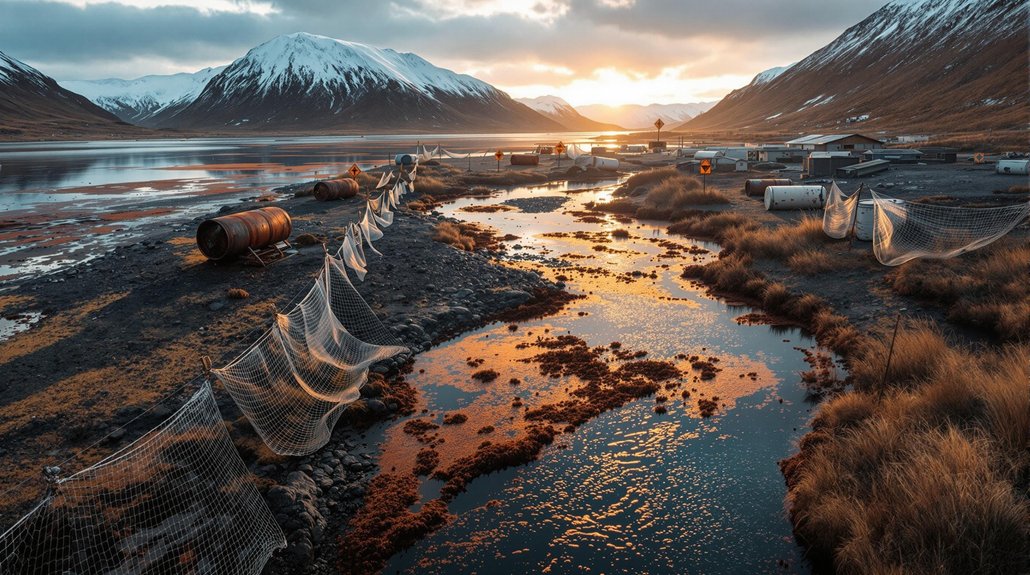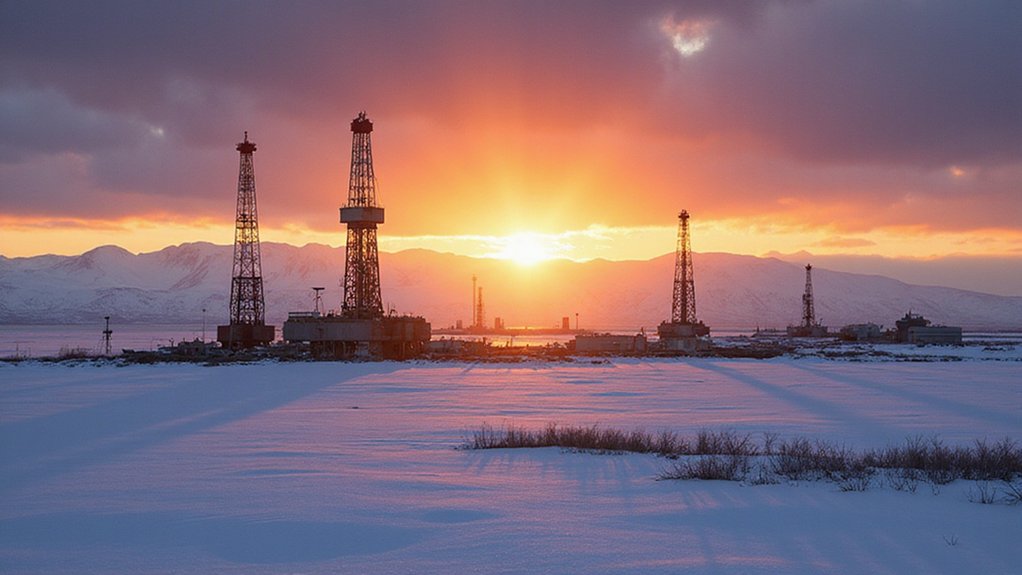Alaska’s military legacy has become a toxic nightmare for Native communities. Nearly 250 contaminated sites leak dangerous chemicals into traditional subsistence areas. PCBs, PFAS, and mercury poison groundwater and food at levels way beyond EPA standards. Cancer rates climb. The government’s response? Pathetically slow. Indigenous groups now file UN complaints and form research partnerships to protect ancestral lands. Meanwhile, fish remain contaminated and culture threatened. The full toxic truth runs deeper than most Americans realize.
While most Americans envision Alaska as a pristine wilderness, the U.S. military has left a toxic footprint that tells a different story. The numbers are staggering: 364 former military bases, with 248 sites heavily contaminated. Alaska ranks third nationally for these toxic military dumping grounds. Not exactly the postcard image tourists snap at Denali.
The cocktail of contaminants reads like a chemist’s nightmare. PCBs in water and soil. PFAS in groundwater—at levels that would make your tap water seem radioactive. Eielson Air Force Base tops the contamination charts with PFAS levels at 334,200 parts per trillion. For perspective, the EPA suggests 4 parts per trillion might be safe. Do the math.
Alaska Natives bear the heaviest burden. Their traditional foods—fish, marine mammals—now come with a side of invisible poison. These toxins bioaccumulate. That means the salmon they’ve relied on for generations now delivers more than protein. Cancer rates have climbed. Cultural practices are threatened. Clean drinking water? Good luck. A 2022 study found that 89% of fish near military sites contained mercury above safe consumption levels. On Sivuqaq, or St. Lawrence Island, Indigenous Yupik peoples have documented extensive health impacts from military contamination of their ancestral lands.
Indigenous communities watch as ancestral foods become toxic delivery systems, threatening both bodies and traditions.
The government’s response has been, well, glacial. Some sites get the prestigious “Superfund” designation. Others wait. And wait. Funding falls short. Assessments remain incomplete. It’s like trying to clean an oil spill with paper towels.
The legal landscape offers little comfort. The PACT Act, meant to help veterans exposed to toxins, conveniently sidesteps PFAS-related diseases. No VA registry exists for those exposed. Alaska’s ban on AFFF firefighting foam didn’t start until 2024. Too little, too late.
Communities aren’t sitting quietly. Alaska Community Action on Toxics has taken their fight international, filing complaints with the UN. Indigenous groups have formed research partnerships. They’re demanding accountability, pushing to reopen closed cases on cleanup decisions.
Meanwhile, the contamination persists. Military came, military left. The poisons stayed. And Alaska’s supposed wilderness hides a toxic truth that no amount of northern lights can make pretty.








